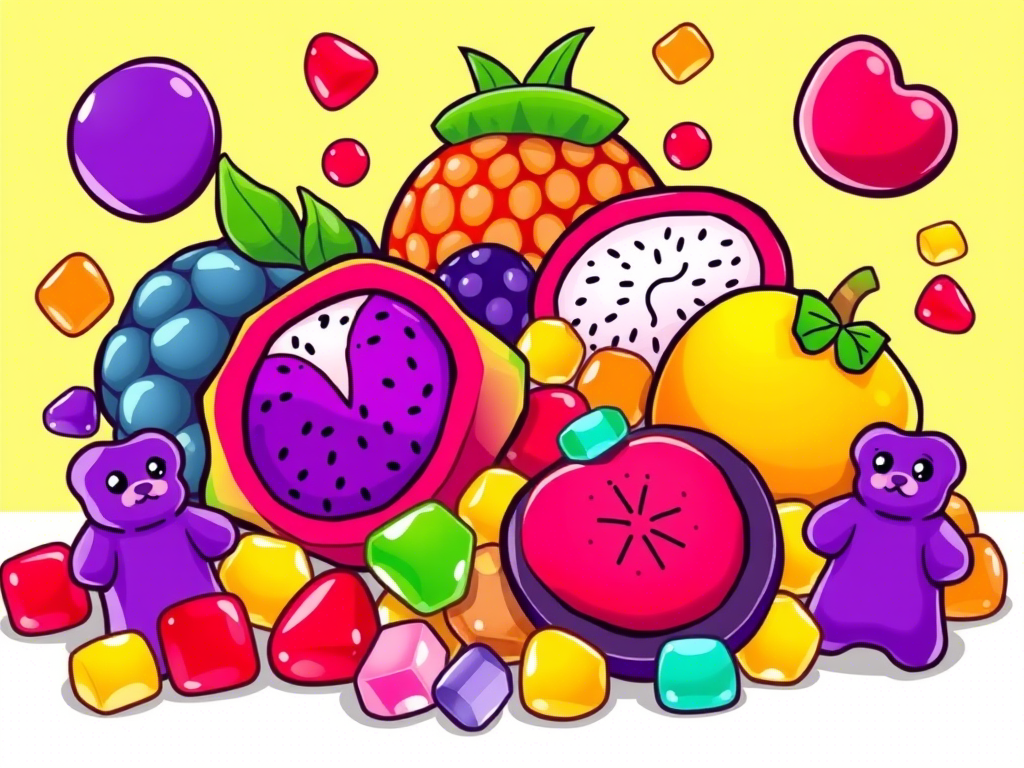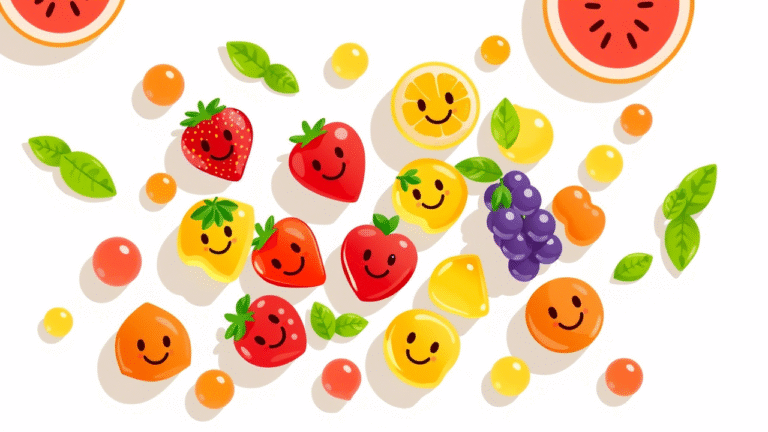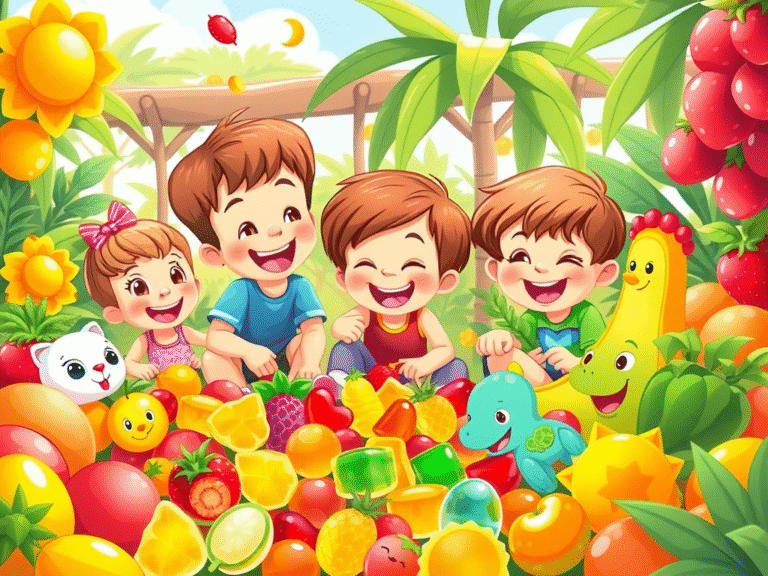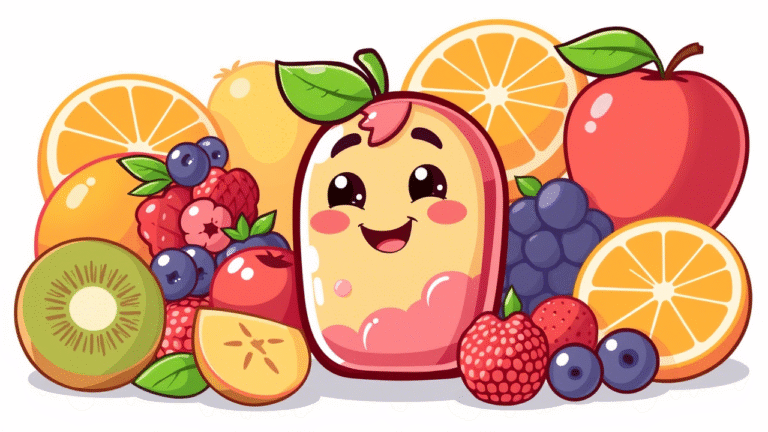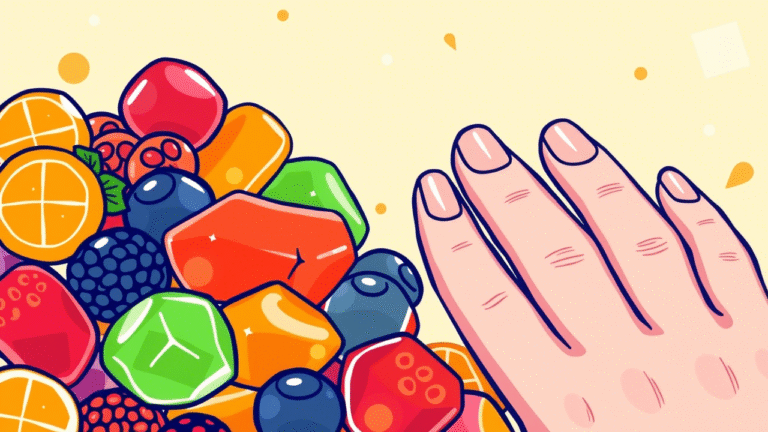Why Do Some Gummies Use Fruits You’ve Never Heard Of?
Ever popped a gummy in your mouth and thought, What is all this flavor? That’s in part because some gummies use exotic fruits like dragon fruit or lychee.
Brands do this in order to compete in a crowded market, to get the attention of adventurous eaters who are curious to try something they haven’t had before.
It’s also about health trends — exotic fruits are frequently loaded with nutrition, so these gummies can feel almost guilt free.
Now let’s explore why these goofy little candies are experimenting with growth so funky. I’ll dissect it for you — one juicy bite at a time.
The Battle for Shelf Space
I bet you’d be surprised at how many gummies are available now. Just walk into a store and you’ll find shelves packed with gummies — in every color in the rainbow.
For the most part they all taste like the classics — cherry, apple, grape. Yawn.
But then, BAM! A package catches your eye. “Dragon fruit gummies!” it says. Suddenly, you’re intrigued. That’s precisely what brands are looking for.
They stimulate curiosity by using exotic fruits. They make you pause and ponder, Hmm, what does dragon fruit even taste like? And then, just like that, you throw the bag in your cart.
“Exotic fruits are an opportunity for brands to differentiate themselves. If everyone else is making cherry gummies, why not get a little crazy?
Think lychee, mangosteen, or even durian (yes, that stinky fruit). These are the flavors of individuality. They say: “Hey, we’re not your average candy company.”
Consumers love novelty. Especially millennials and Gen Z — they’re all about trying new things. And guess what? And they are willing to pay more for it. Exotic fruit gummies are typically pricey, but people don’t mind.
In their eyes, it’s an experience, not simply a nibble.
Health Appeal
Let’s discuss why exotic fruits are more than just fun — they’re good for you, too. Oh, very much so, at least to a regular gummy bear.
Just look at dragon fruit. It’s packed with antioxidants. Or mangosteen, which teems with vitamins.
Even guava and papaya are sources of nutritional ammunition. (When brands put these fruits in their gummies, the products can be marketed as healthier.)
Now, I’m not going to try to sell you on the idea that these gummies are practically kale chips.
If they’re made with real fruit puree or juice, though, they are decidedly better than all the versions made of synthetic colors and flavors. And that is important to health-conscious buyers.
The trend is plain: People want snacks that feel O.K. They are searching for products containing natural ingredients.
Fewer chemicals, more nature. Exotic fruit gummies are just the ticket. And they usually sound good, too: They often sport labels like “vegan” or “gluten-free.”
So when you spot that bag of passion fruit gummies, you might think, This seems like a treat that I can indulge in without shame. And that is exactly what brands are betting on.
Globalization
That’s the thing: exotic fruits are no mere capricious selections. They are a reflection of our increasingly global sensitivity.
Thanks to travel, social media and international cuisines, we’re more curious about what people eat in other cultures.
The exotic fruit market is dominated in Asia Pacific for instance. Countries like China, Japan and India are big lovers of tropical fruits. Of that, 37.8% comes from mangoes alone. That’s massive.
Japanese gummies are the perfect example. You ever try yuzu or sakura-flavored anything? These are informed by regional tastes and traditions.
They are not simply selling candy — they are selling culture.
And it’s not just Asia. Durian, also called the “king of fruits,” is native to Southeast Asia. Korea and All That Though persimmons are widely enjoyed in Korea.
Pineapple may be ordinary to us, but in many regions of the world, it’s viewed as exotic.
And brands are tapping into this global vibe. They are telling a story by using fruits from all around. A story of discovery, diversity and kinship. And consumers are devouring it — quite literally.
Retail Trends
If you’ve ever wondered where these tantalizing gummies are available for purchase, read on. Specialty stores are the most aggressive.
In reality, 72.3% exotic fruit trade is offline, and with bottom shop employees in those boutiques.
Why? Well, because specialty stores target a specific market. Their clients are seeking novelty, and exotic fruit gummies are just that. These shops know their market — it’s the foodies, adventurers and health-enthusiasts.
Online sales are also expanding, but the in-store experience can’t be beat. Imagine going into a store and finding a display of gummies with cermai, a Malay gooseberry. You would grab a bag just to give it a try.
Exotic fruits are beloved by the commercial sector as well. They were 63.4% of the market share in 2023. That’s because businesses know these flavors are big sellers. Everywhere you look — whether at a trendy cafe or a high-end grocery emporium — exotic gummies seem to beckon.
Market Data
Let’s get nerdy for a second. The market for exotic fruit is booming. Here’s a quick look at the numbers:
| Statistic/Fact | Value/Detail |
| Exotic fruit market size (2023) | USD 18.8 billion |
| Projected market size (2033) | USD 33.7 billion |
| Compound annual growth rate (CAGR) | 6.7% (2023–2033) |
| Conventional exotic fruit market share (2023) | 67.8% |
| Mangoes’ share of exotic fruit market | 37.8% |
| Asia Pacific market share | 60.2% |
| Commercial sector usage | 63.4% |
| Specialty store distribution | 72.3% |
These numbers tell a story. The exotic fruit market is not just growing but thriving. It’s projected to be worth over $33 billion by 2033. That’s a ton of dragon fruit gummies.
Mangoes are everywhere, but other fruits like guava, papaya, and passionfruit are making a play for mango’s throne. And it’s not slowing down — the CAGR stands at 6.7 percent.
Popular Exotic Fruits in Gummies
But what are the top exotic fruits as they relate to gummies? Let’s take a look:
- Mango: Because it’s the king of the exotic fruits, mangoes are a no brainer. They’re sweet and juicy and universally loved.
- Dragon Fruit: As Instagrammable as it is tasty, dragon fruit has bright pink skin and speckled guts.
- passionfruit: Tropical fruit: The sharper taste of passionfruit brings a burst of the tropics to any gummy.
- Lychee: This fan-favorite is delicate and sweet with a floral aroma.
- Mangosteen: Known as the “queen of fruits,” mangosteen is velvety.
- Guava Power house of vitamin C guava is loaded with health benefits.
- Papaya: Papayas have a mild, non-overpowering taste which makes them great for using in gummies.
- Pineapple: It may not be as exotic-worthy for everyone, but pineapple still maintains a tropical-streaming vibe.
- Persimmon: Sweet and a little bit spicy, persimmon is a secret star.
- Durian: You either love it or hate it, but no one ever forgets durian.
Each of those fruits has something special to offer. Collectively, they make a rainbow of tastes that lure diners back for more.
Sensory Insights
Here’s an interesting tidbit: Research has demonstrated that incorporating up to 60% juice from more exotic up there types of fruit, such as cermai, into a gummy increases the sensorial attributes of the product.
What does that mean? It means they taste better.
Think about it. When you take a bite of a gummy, you expect it to be squishy, chewy and full of flavor.
Exotic fruits check all the boxes. Cermai, for example, contributes a tart sweetness that’s difficult to resist.
And, oh, the visuals are to die for. Dragon fruit gummies are pink and speckled; passionfruit is a sunny yellow. These shades are all natural from the fruit too, adding a touch of aesthetic appeal to the gummies as well.
Final Thoughts
Exotic fruits are employed by gummy manufacturers to differentiate themselves, attract adventurous eaters and capitalize on health trends.
It’s a savvy move, supported by a surging $18.8 billion market in exotic fruits.
Try a bag of them the next time you see them, if you find yourself near a bag of lychee gummies. Who knows? You may find your next favorite snack.

I’m Kai, a fitness fiend and wellness geek from Vancouver. I love helping people find small, sustainable ways to feel better every day. From workouts, to good mental health, to smoothie recipes, I keep it real. Perfection is not my thing — progress is. When I’m not at the gym, I’m likely to be hiking or sampling a new meditation app

